Raku Firing
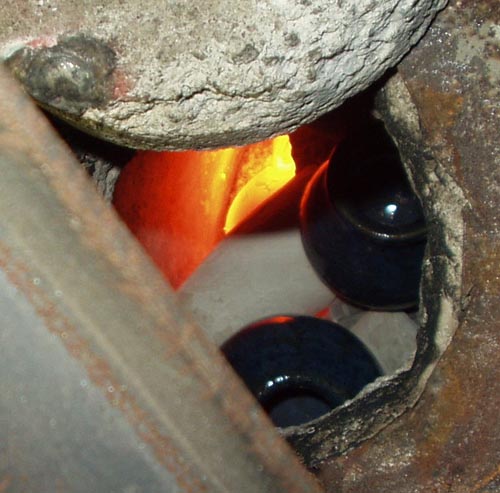
This is the beginning (maybe an hour in) of a raku firing I did using my big furnace as a kiln. As you can see, the heat isn't terribly even.
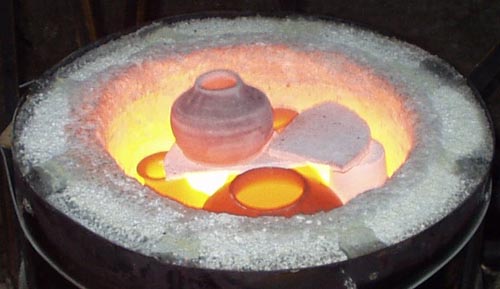
Skipping ahead to the end of the firing. It's much hotter now, but still not very even. Glazes on the pieces in the bottom fused fully, but the glazes on the top pieces ended up sintered instead of fused. Not that it particularly matters--raku is unsafe to use for functional ware anyway.

Placing the pieces in wood shavings and cardboard. This is inside a firepit, with sheetmetal blocking off the air holes. There is another bucket for smaller pieces behind this one--that's what the smaller flame is.
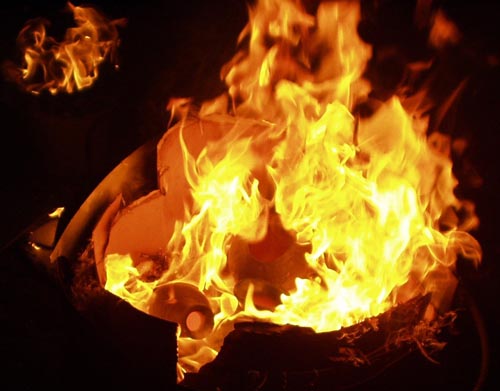
Burning well. Actually, too well--this is supposed to be reduction. I hadn't put a cover on it yet.
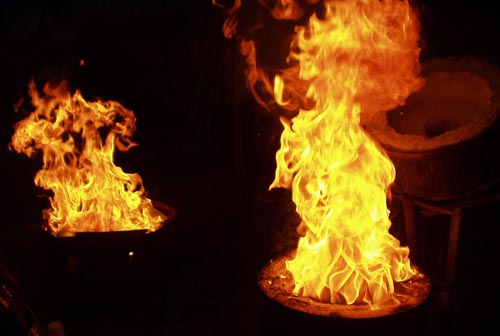
Here, I threw a big armful of wood shavings into the hot furnace, which had a couple of pots that were going to be too hard to extract. I think scenes like this are what makes raku so popular.
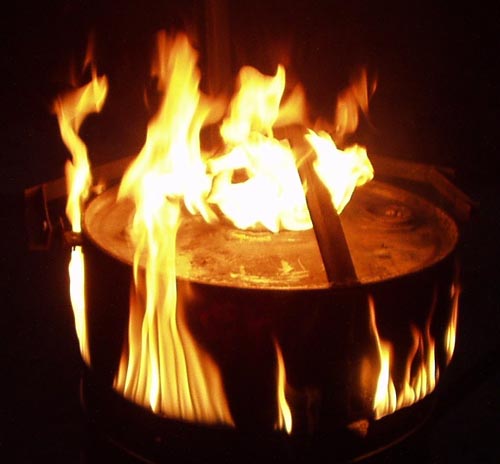
You can see how poorly my furnace lid seals. That's a big part of the uneven firing that was causing problems earlier, and here, it's keeping the atmosphere from being very reducing.
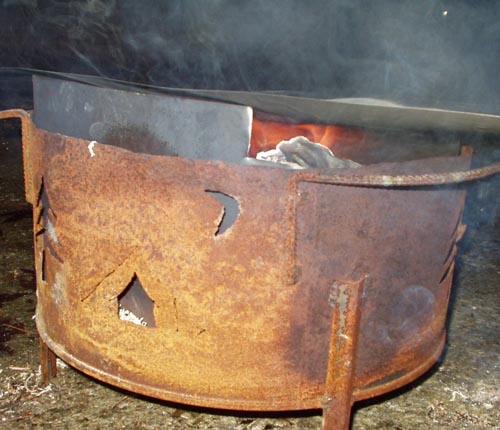
This is pretty reducing. There's still some flame in there, though--it leaks like a sieve. If you're curious, this contraption is designed to be a firepit, and was plasma-cut from the end of a 55-gallon drum. I would have used the other 2/3rds of the drum, which doesn't have holes in it, but that was full of scrap steel.
Now, for the aftermath . . .
The next day:
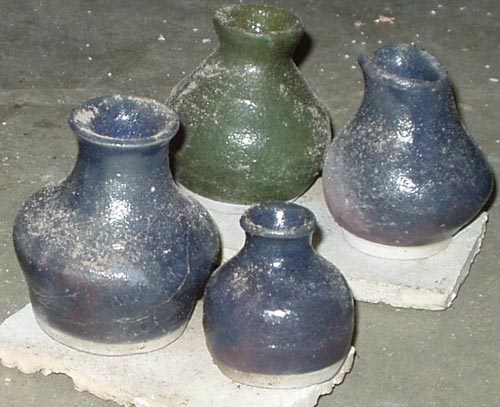
These small pots were in the bottom of the furnace, where it got the hottest, and did fairly well. They could have been reduced more, though.
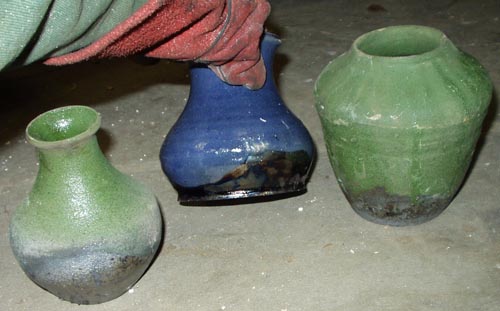
These larger pots were the ones in the firepit, and the tops of them didn't get hot enough, or get reduced enough, to produce the interesting effects on the bottom. I did get some effects, though. That green glaze is brownish-red in full oxidation.
